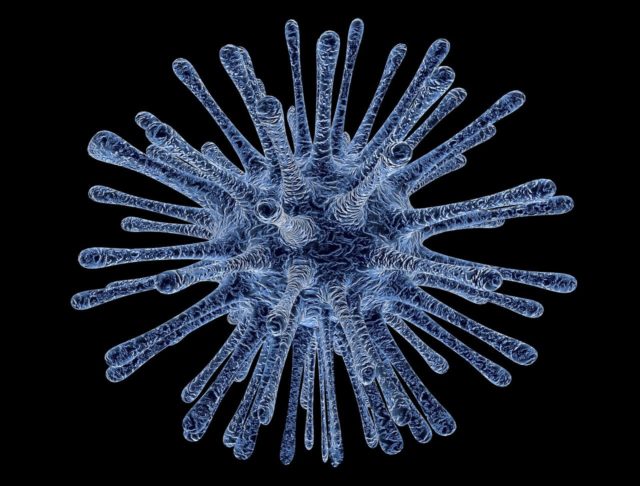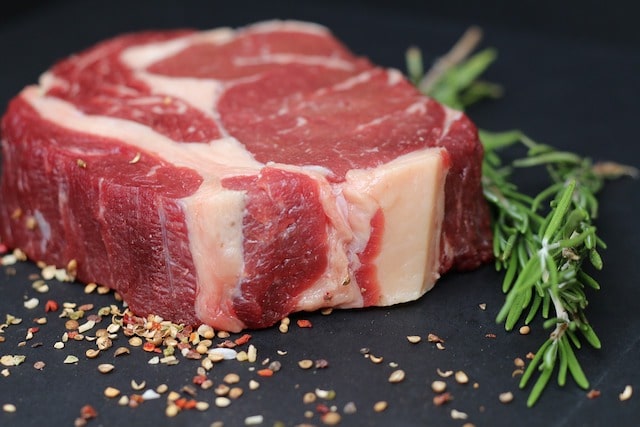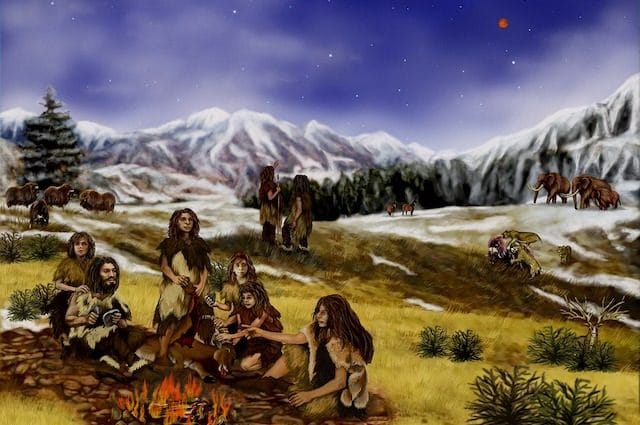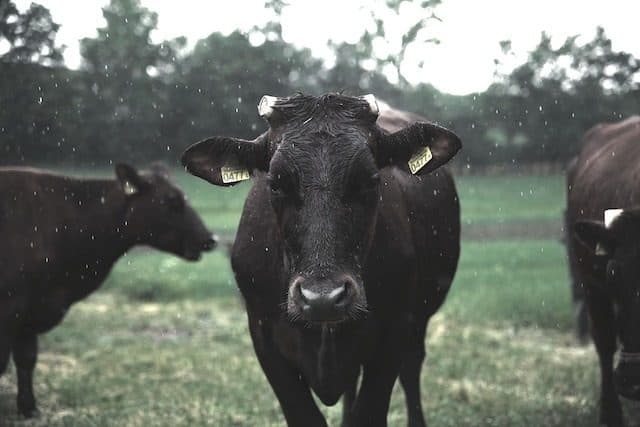Most people understand evolution to be quite linear and straightforward. Remember that chart of apes gradually turning into early humans, and then modern, civilized people? Almost all of us imagine evolution to be a set of gradual step ups, even if that’s not how it happened at all.
Dig into our early history, and you’d find that our evolution has been anything but straightforward. It’s actually by complete chance that we ended up where we did at all, given the vast number of forks we’ve encountered on the way here.
One of those important diversions from the natural path was our decision to settle down and farm. While it may seem like an obvious choice in hindsight, it wasn’t obvious at all at the time. In fact, early farming communities were plagued (literally) by problems that only arose due to that decision to settle down, casting doubt over why we did it at all. Some of those problems persist today, including the current Covid-19 pandemic.
8. The Beginning Of The Age Of Pandemics

There’s no doubt that hunter-gatherers had some definite disadvantages in the health department. An average forager lived a far more dangerous life, and was much more likely to die at an early age than their farmer counterparts. That’s, of course, if we don’t consider what is perhaps the biggest problem that came with the agricultural revolution: pandemics.
While domesticating farm animals definitely helped us grow our population and develop new, more complex tools, we had to pay a very high price for it. Almost every major pandemic in history – including the Black Death, Spanish Flu and current Covid-19 pandemic – has come from our increased proximity with animals after the agricultural revolution. Livestock-related pandemics were unheard of in forager societies, as they never really stayed in one place for harmful microbes to develop and evolve. Livestock and farming gave parasitical microbes fertile grounds to hone their skills, resulting in historical events of mass death that have claimed more lives than any other disaster we’ve ever faced.
7. Many Of Our Diseases Were Absent Among Hunter-Gatherer Populations

If we count the health costs of moving to farming, pandemics already make it seem like a pretty bad choice. It’s not the only one, though. Settling down in farming societies came with an inherently evolutionary conundrum for our bodies. For an overwhelming part of our history, we had evolved to survive in the wild, with instincts and bodily functions designed to aid that lifestyle. As soon as we settled into farming societies, though, many of those functions and abilities ceased to have a role in our daily lives, giving rise to many of today’s most common medical problems.
Diseases like type-2 diabetes, anxiety and other mood disorders, auto-immune diseases, coronary heart disease, obesity and hypertension – among many others – are a direct result of our bodies not being able to adapt to our relatively newer farming lifestyle. Hunter-gatherer populations didn’t have these problems, as their bodies were precisely designed for it.
6. Our Teeth Don’t Fit Our Jaws Anymore

Dental problems are surprisingly common among all human populations. Visits to dentists make up a big chunk of our regular medical check-ups, and we never really stop to think how that came to be.
As you’d have guessed, dental problems are yet another compromise we had to make to settle into farming societies. As our diets changed and became softer, our jaws became smaller, too. It made sense, as we no longer needed the lower jaw power to crush the varied, raw diet of our hunter-gatherer ancestors. The teeth, however, remained largely unchanged in shape or size. Thanks to that, around one in five people today suffer from misaligned teeth, along with a bunch of other dental problems we never had in our foraging days.
5. Farmers Work More Hours Than Foragers

The biggest argument in favor of farming is that it allows people to work fewer hours. It stands to reason that an ancient hunter-gatherer tribe would have to spend a lot more time looking for food or a place to stay than, say, a digital marketing executive today.
As mounting research is proving, though, that’s not the case at all. In one study, foraging societies were found to have at least 10 more hours of leisure time per week than their farming counterparts. It’s even more pronounced for women. As more and more women had to take on farming responsibilities on top of their traditional role in the hunter-gatherer family, their leisure time was reduced by as much as half.
Besides, you don’t need historical data to prove that we now work longer hours than we ever did. While it’s true that agriculture has helped some sections of the population – like merchants, CEOs, craftsmen, sportspeople, etc. – gather a lot more resources with a lot less effort than they ever could in their hunter-gatherer days, they’re few and far between. The vast majority of the human population still lives paycheck to paycheck, with little to no time for any pursuit other than making a living.
4. The Hunter-Gatherer Diet Was Much More Balanced

On the face of it, the decision to settle down into farming societies is a no brainer. We’ve never had more control over our food supply than we do today. Famines and droughts seem to be a thing of the past in, and we’re now at a stage where we’re modifying and producing exactly what we want from nature, something we’ve never been able to do.
However, all of that has only been possible in the last few centuries. The early farmers were at a definite disadvantage when it came to the variety of diet they consumed compared to their forager ancestors. A typical hunter-gatherer diet was far more varied and balanced than any farmer’s – early farms had, at best, a few specialized crops – and that’s true even today. A lot of our modern diseases related to deficiency of nutrients were virtually unheard of in hunter-gatherer societies. That’s also precisely why many doctors and nutritionists today suggest going ‘paleo’.
3. Hunter-Gatherer Mortality Rate Was Largely Similar To Ours

Mortality rate is one of the most commonly used arguments to support the transition from foraging to farming. It makes sense, too, as it’s common wisdom that hunter gatherer bands would be at a much higher risk of dying early as modern day humans. After all, there is little risk of encountering a wild animal on your daily grocery run these days, unlike the hunting-gathering era where almost everything in the wilderness was out to kill you.
While it seems intuitive, science doesn’t actually support the hypothesis that hunter-gatherers lived shorter lives than early farmers. Sure, infant mortality was much higher back then, though if you survived that, the age span and mortality rates seem to be pretty much on the same lines as some developed societies today. Additionally, early farmers had to deal with devastating events – like sudden shortages of food and diseases – driving early mortality rates of farming societies even higher than their most recent hunter-gatherer counterparts.
2. Hunter-Gatherer Societies Were More Egalitarian

Take a look at the state of the world in the last couple of centuries or so, and you’d be forced to conclude that people are simply not meant to live in harmony with each other. From genocides to massive nation-state wars, to the ridiculously diverse varieties of prejudices – like sexism, racism, homophobia, etc. – still alive and kicking in most cultures around the world, we’ve seen it all. It must be, as many of us are led to believe, human nature to keep fighting among ourselves.
If you study evolutionary history, though, that’s not human nature at all. We’re built to cooperate with each other and work for the greater good, and solitary hunters akin to the individualists of today never survived for long. So, where did it all go so wrong?
You guessed it: the agricultural revolution. Farming may have provided us with a once-in-a-lifetime hack to grow our population and rapidly develop new technology, systems of government, and whatnot, though it came at the high price of a perpetually divided society.
Take patriarchy as an example. The rigid and patriarchal gender roles present in almost every major society in the world today stem directly from the reduced role of the woman in the fields in the wake of the agricultural revolution. Female participation in the labor force reduced over the years, gradually giving shape to what we today know as the ‘gender pay gap’.
It’s not just restricted to patriarchy, either. Farming inherently divided the society based on various factors – like gender, race, sexual orientation, etc. – that were never relevant in our hunter-gatherer days. As people settled down into farms and started doing more of one thing instead of a bit of everything, these differences became even more pronounced over time, resulting in prejudice-based political and social systems like the American, German nationalism, or the Indian caste system.
1. It Was An Apocalypse For The Animals

By now, it’s quite clear that moving to farming was a questionable – if not outright disadvantageous – decision for us humans. While it has definitely proven to be quite beneficial in terms of scientific progress and generally advancing our society, we’ve had to sacrifice too much to be able to say that. We may never be able to answer if it was all worth it for us, though we can say it for certainty for the other inhabitants of this world; for them, it has been an unprecedented disaster.
The agricultural revolution was the beginning of an entirely new type of animal we had never known before – the domesticated farm animal. Never before in our history had we consciously modified the very nature of various species to serve us, as the huge populations of farming societies required a consistent supply of meat and other animal-derived resources to thrive. In that process, we have dumbed down and essentially killed the natural instincts of some of the smartest animals in nature, like cows, pigs and horses, even if they may seem to be doing better than their wild ancestors on the face of it.
While it’s true that a cow can rely on a consistent supply of food to ensure maximum milk production – hence guaranteeing its evolutionary survival – that’s where the good times end. Across cultures, cows are still regularly separated from their offspring, mutilated or blinded, and made to sit in cages for their entire lives despite their natural instinct to be in the wild. Compare a cow with its wild ancestors, and you’d think that it was a completely different animal, and that’s the case with almost every other domesticated animal.